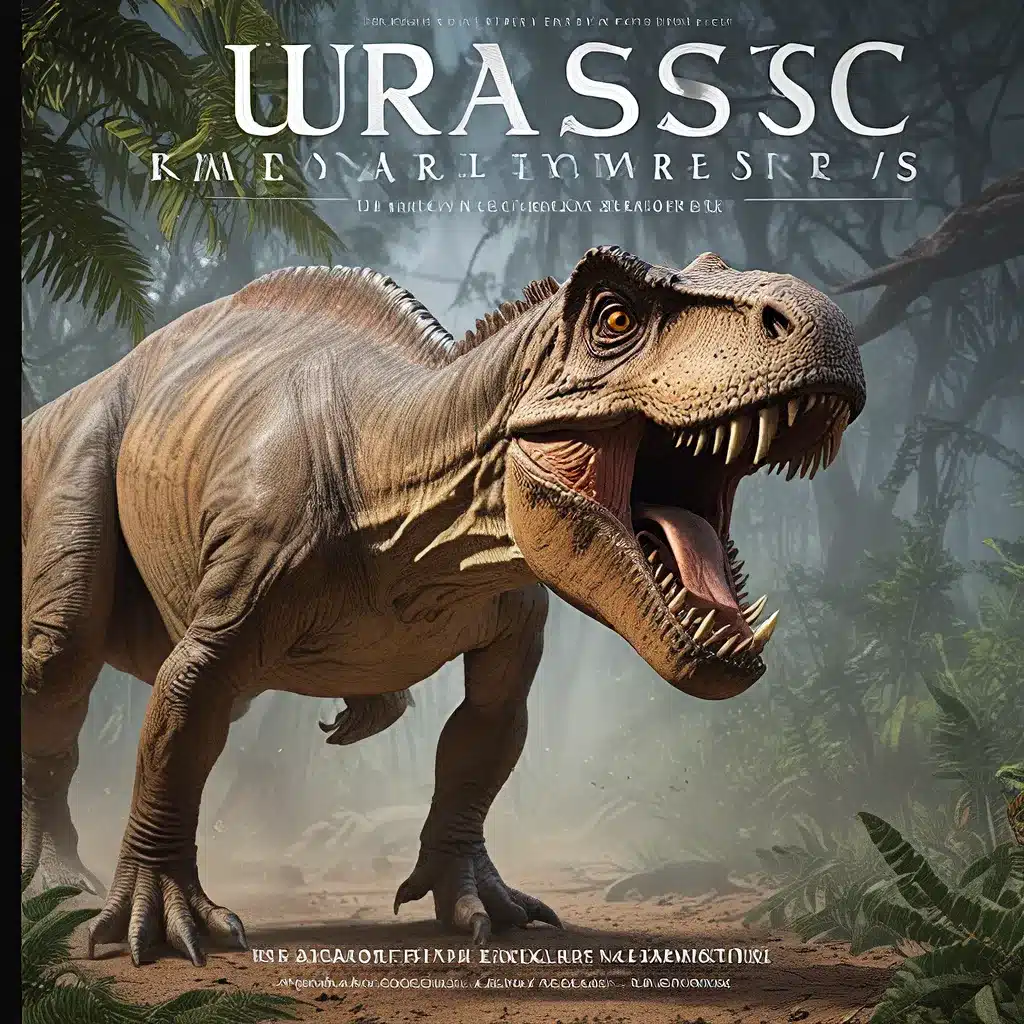
Unraveling the Mysteries of Prehistoric Predators
The Jurassic period, spanning from 201 to 145 million years ago, was a time of extraordinary diversity and evolution in the animal kingdom. At the heart of this prehistoric era were the dinosaurs, a captivating group of creatures that have captured the imagination of scientists and the public alike. As our understanding of these ancient reptiles continues to grow, researchers have uncovered a wealth of insights into their complex behaviors, social structures, and adaptations to their environments.
One of the most significant developments in the study of dinosaurs has been the advent of paleontology, the scientific discipline dedicated to the study of prehistoric life. Through the meticulous examination of fossil remains, paleontologists have pieced together a detailed picture of the Jurassic world, shedding light on the daily lives and activities of these formidable beasts. From the iconic Tyrannosaurus Rex to the majestic Triceratops, each discovery has contributed to our understanding of the complex behaviors and adaptations that allowed these creatures to thrive in their respective ecosystems.
The Behavioral Complexity of Dinosaurs
One of the most intriguing aspects of dinosaur research is the growing evidence of their behavioral complexity. Far from the lumbering, mindless beasts of popular imagination, many dinosaurs have been shown to possess sophisticated social structures, intricate communication systems, and even signs of parental care.
Recent studies have shed light on the social dynamics of certain dinosaur species, such as the highly gregarious Maiasaura. These plant-eating dinosaurs are believed to have lived in large, communal nesting grounds, where they cared for their young and potentially engaged in complex social interactions. Similarly, the discovery of nesting sites and fossilized egg clutches has provided insights into the parental behaviors of various dinosaur species, suggesting that they may have been more attentive and nurturing than previously thought.
Furthermore, the study of dinosaur communication has revealed a fascinating array of potential vocalizations and visual displays. Researchers have hypothesized that dinosaurs may have used a variety of sounds, from low-frequency rumbles to high-pitched calls, to convey information about their social status, mating rituals, and territorial boundaries. Similarly, the presence of distinctive physical features, such as crests, horns, and brightly colored scales, suggests that dinosaurs may have used visual signals to communicate and interact with one another.
Uncovering New Dinosaur Species and Behaviors
As the field of paleontology continues to evolve, researchers have uncovered a wealth of new dinosaur species and unexpected behavioral traits. One such example is the recent discovery of the Halszkaraptor escuilliei, a small, feathered dinosaur that exhibits a unique combination of avian and non-avian features, challenging our understanding of dinosaur evolution and the origins of flight.
Another fascinating discovery is the Spinosaurus, a massive, semi-aquatic predator that was recently revealed to have been an adept swimmer, capable of hunting prey in both terrestrial and aquatic environments. This finding has sparked a broader discussion about the diverse adaptations and ecological niches occupied by different dinosaur species, challenging the traditional view of these animals as exclusively land-based creatures.
Dinosaur Hybrids and the Jurassic Narrative
The fascination with dinosaurs has also led to the emergence of hybrid species in the world of science fiction and popular culture. The Indominus Rex, a genetically engineered hybrid featured in the Jurassic World franchise, has become a prime example of this narrative evolution. As some fans have noted, the Indominus Rex and other hybrid dinosaurs represent the “apex of the narrative” regarding the dangers of genetic manipulation and “playing god.”
While the creation of hybrid dinosaurs in the Jurassic World films has been met with some criticism from fans, it has also sparked a broader discussion about the ethical implications of scientific advancement and the hubris of humanity. The Indominus Rex, with its monstrous appearance and formidable abilities, serves as a cautionary tale about the potential consequences of pushing the boundaries of science without considering the moral and environmental ramifications.
The Importance of Preserving Dinosaur Heritage
As our understanding of dinosaurs continues to evolve, it is crucial that we prioritize the preservation and protection of these ancient creatures and their habitats. The Jurassic world we have come to know and love is not just a product of our imagination but a tangible, irreplaceable part of our shared heritage. By supporting the efforts of paleontologists, archaeologists, and conservation organizations, we can ensure that future generations will be able to marvel at the wonders of the Jurassic period and gain valuable insights into the origins of life on our planet.
The study of dinosaurs has not only captivated our imaginations but has also transformed our understanding of the natural world. From the complex social behaviors of these prehistoric beasts to the unexpected adaptations that allowed them to thrive in diverse environments, each new discovery has the potential to reshape our perceptions of the past and inspire us to protect the natural world for the future.
As we continue to explore the Jurassic revelations that lie before us, let us embrace the spirit of scientific inquiry and the pursuit of knowledge that has characterized the study of dinosaurs for centuries. By doing so, we can uncover the secrets of these remarkable creatures and unlock the hidden truths that lie buried in the sands of time.


